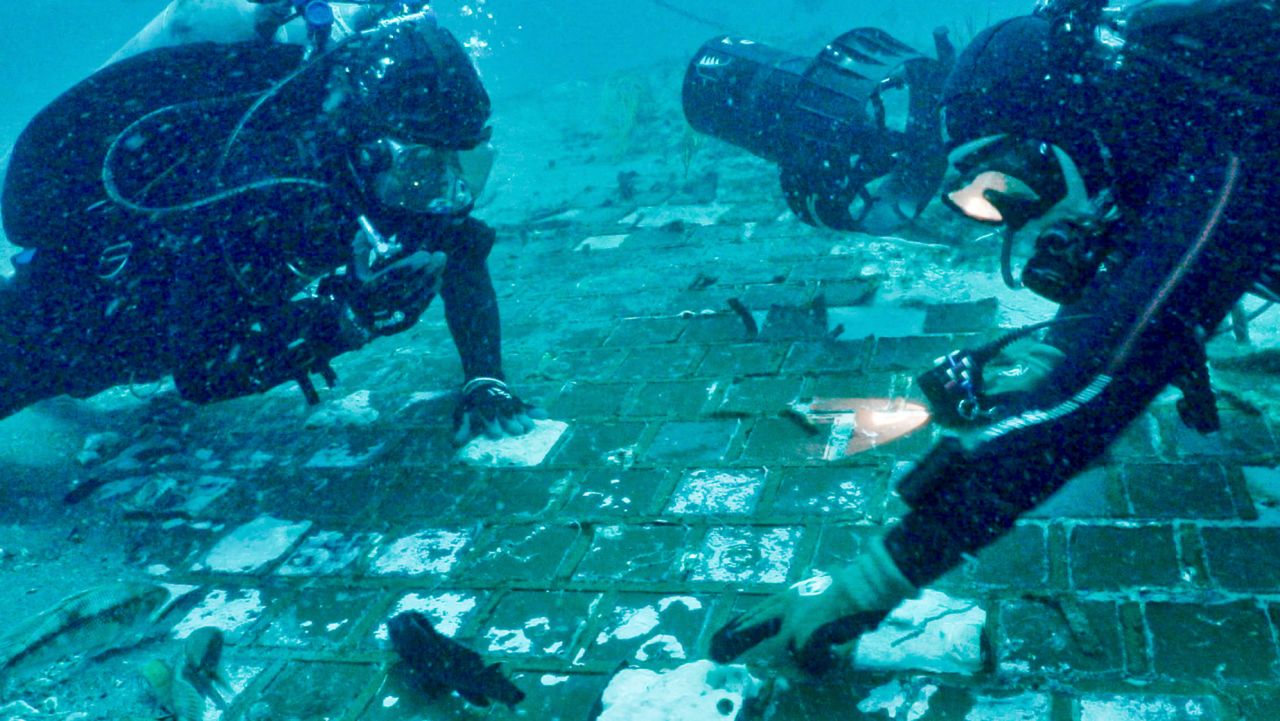Deep in the sea: remains of the Challenger shuttle found 0:52
(CNN) --
A group of explorers headed out into the Atlantic Ocean in search of World War II artifacts lost at sea, but they came across something else: a six-meter-long segment of the wreckage of the space shuttle Challenger. , which was destroyed shortly after its launch in 1986.
The History Channel and NASA revealed Thursday that the Challenger segment was discovered off the east coast of Florida during filming for a new series called "The Bermuda Triangle: Into Cursed Waters."
The series will premiere this month on the History Channel.
Challenger broke up upon launch on January 28, 1986, killing all seven crew members on board, including a professor who was to become the first civilian in space.
Viewers, especially students in schools across the United States, watched in horror as the live broadcast of the explosion that morning.
"NASA is currently considering what additional actions it can take regarding the artifact that will appropriately honor the legacy of the fallen Challenger astronauts and their loved ones," the space agency said in a news release.
35 years ago the space shuttle Challenger disintegrated 73 seconds after take off.
All her crew died
Mike Barnette, an underwater explorer who led the team that found the shuttle artifact, remembers watching the tragedy on television in his high school class.
Barnette said it was a "sobering" experience to realize his team had found a piece of the spacecraft, the first wreckage to be discovered since the shuttle's remnants washed ashore in 1996.
"I can almost smell the odors from that day," Barnette told CNN in a telephone interview Thursday, referring to the day the Challenger exploded.
"I have it so etched in my brain."
advertising
Barnette and his team of investigators set out in March to search for suspected shipwrecks in the Bermuda Triangle, a stretch of the North Atlantic Ocean that is said to have seen dozens of shipwrecks and plane crashes.
The team also examined an area outside the triangle, just off the Florida Space Coast, where NASA has launched rockets since its inception.
The team was searching for a World War II rescue plane that mysteriously disappeared in December 1945, but a more modern object partially covered by seafloor sand sparked the dive team's interest and investigation, according to the History Channel.
During the first dive, Barnette said a storm turned the water so cloudy it was like swimming in Guinness.
"We had terrible visibility," she said.
Divers went on a second excursion in May and finally captured clear images of the wreckage.
They took evidence of their discovery to retired NASA astronaut Bruce Melnick, a longtime friend of Barnette's, who immediately suggested that it might be debris from the Challenger disaster.
Unpublished photos of the Challenger appear, almost 30 years after the tragedy
Particular square mosaics from Challenger clued the explorers in, suggesting they had discovered a large chunk of the orbiter's underside.
The underside was covered with thousands of silicone tiles that protected the shuttle from heat as it re-entered Earth's atmosphere from space.
The team delivered their findings to NASA in August, and the space agency recently confirmed the origin of the wreckage after reviewing images from the dive, according to a press release.
Challenger's last mission was to carry seven people into space: NASA astronauts Francis "Dick" Scobee, Michael Smith, Ronald McNair, Ellison Onizuka, Judith Resnik, and Gregory Jarvis, as well as Christa McAuliffe, a teacher from New Hampshire. that she was to become the first civilian space shuttle passenger as part of a new NASA program.
However, 73 seconds after liftoff from the Florida launch center, the Challenger exploded, killing everyone on board.
A NASA investigation later revealed that a rubber washer in one of Challenger's solid rocket boosters had failed because it was exposed to unusually low temperatures while the space shuttle was on the launch pad.
This caused a leak of highly explosive gases, which ultimately led to the catastrophic explosion.
"Although it has been nearly 37 years since seven bold and brave explorers lost their lives aboard the Challenger, this tragedy will forever be etched in the collective memory of our country. For millions of people around the world, including myself , January 28, 1986 still seems like yesterday," NASA Administrator Bill Nelson said in a statement.
"This discovery gives us an opportunity to pause once again, to elevate the legacies of the seven pioneers we lost, and to reflect on how this tragedy changed us. At NASA, the core value of safety is, and must forever remain our top priority, especially as our missions explore the cosmos further than ever."
The six-part series "The Bermuda Triangle: Into Cursed Waters" premieres at 10 pm ET on November 22 on the History Channel.
FindingsNASA

